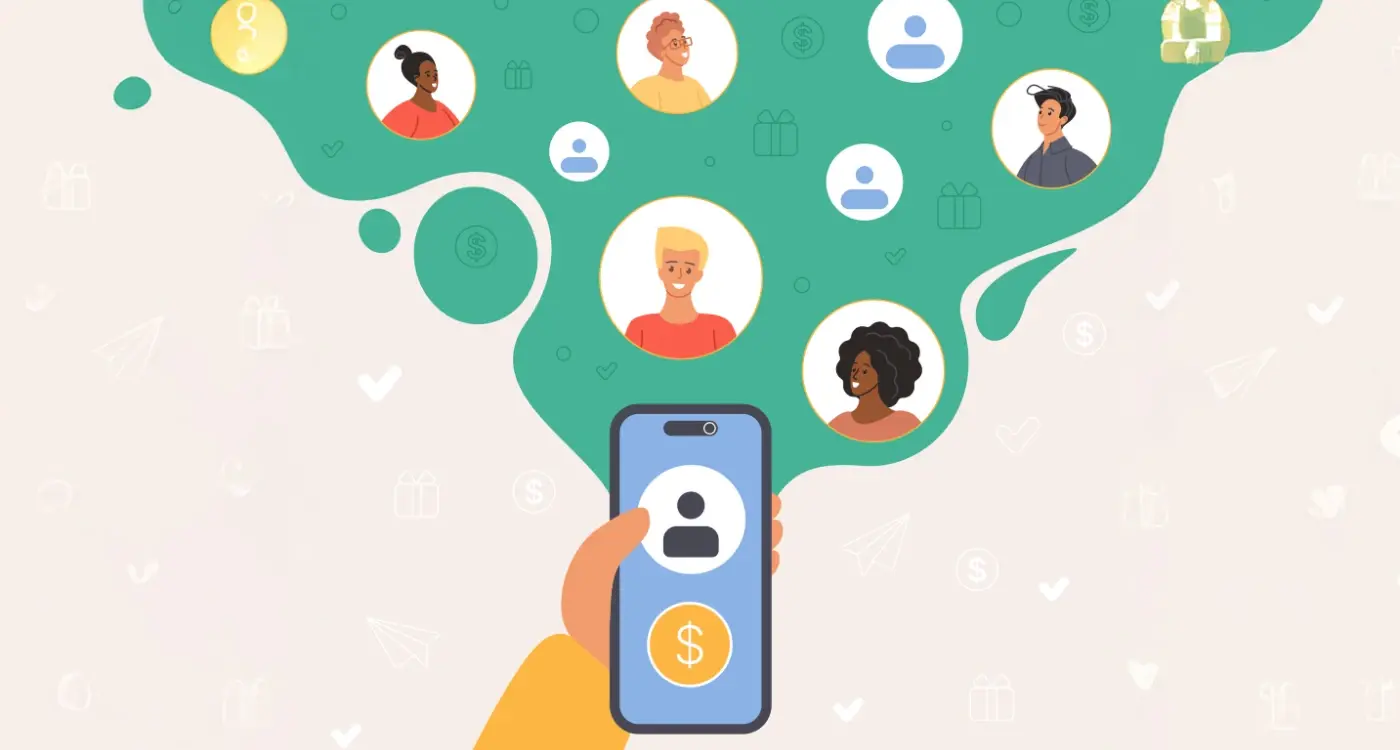How Do I Handle Customer Complaints When My App Crashes?
Over seventy percent of users will uninstall an app immediately after it crashes just once. That's right—one crash and you've potentially lost a customer forever. But here's what's even more telling: the other 29% who stick around? They're the ones writing those complaints, and how you handle them can make or break your app's reputation.
I've been working with mobile app development for years now, and I can tell you that crashes aren't just technical hiccups—they're relationship tests. When someone takes the time to complain about your app crashing, they're actually giving you a gift. They could have silently deleted your app and moved on to a competitor, but instead they're saying "I want this to work; please fix it."
The difference between a failed app and a successful one isn't whether crashes happen—it's how quickly and effectively you respond when they do
That's where proper customer support and issue resolution become your secret weapons. Every crash complaint is an opportunity to turn a frustrated user into a loyal advocate. But getting this right requires more than just saying "sorry"—you need a proper system, the right communication approach, and a genuine commitment to fixing problems fast. This guide will walk you through exactly how to handle these situations, from the moment a complaint lands in your inbox to preventing the same issues from happening again.
Understanding Why App Crashes Happen
Let's be honest—app crashes are frustrating for everyone involved. Your users get annoyed when their favourite app suddenly stops working, and you're left dealing with angry messages and poor reviews. But here's the thing: understanding why crashes happen is the first step to handling complaints properly and fixing the real problems.
Most app crashes fall into predictable categories, and once you know what to look for, you can respond to user complaints with much more confidence. Memory issues are probably the biggest culprit—when your app tries to use more memory than the device has available, it simply shuts down. This happens more often on older phones or when users have lots of apps running at once.
Common Crash Triggers
- Low device memory or storage space
- Outdated operating systems that don't support newer app features
- Poor internet connections causing data loading problems
- Conflicts with other apps running simultaneously
- Bugs in the app code that only show up under specific conditions
- Hardware limitations on older devices
Network connectivity issues cause their fair share of problems too. When users are on patchy wifi or switching between mobile data and wifi, apps can struggle to load content properly and crash as a result. Sometimes it's not even your app's fault—it's just trying to work in less-than-ideal conditions.
Device-Specific Problems
Different devices handle apps differently, which means a crash on one phone might never happen on another. Android fragmentation makes this particularly tricky since there are hundreds of different device models running various versions of the operating system. iOS is more consistent, but even Apple devices have their quirks depending on age and model.
The key takeaway? Most crashes aren't random—they follow patterns you can identify and address once you know what you're looking for. Often, these issues stem from technical debt that accumulates during development, making it crucial to address underlying code quality issues.
Setting Up Your Customer Support System
When your mobile app crashes, having a solid customer support system isn't just nice to have—it's absolutely necessary. I've worked with countless app developers who thought they could wing it with customer support, only to find themselves drowning in angry reviews and frustrated users when things went wrong. The truth is, your support system needs to be ready before your first crash happens, not after.
Your customer support system should have multiple channels where users can reach you. Email is the bare minimum, but you'll want to consider in-app messaging, social media monitoring, and possibly even live chat if your budget allows. The key is making it easy for users to find help when they need it most.
Choosing Your Support Tools
You don't need expensive software to get started, but you do need something that keeps track of conversations and lets your team work together. Many app developers start with basic email support and upgrade as they grow. Whatever you choose, make sure it can handle attachments—users will want to send screenshots of error messages.
- Help desk software for ticket management
- In-app messaging for immediate contact
- Social media monitoring tools
- Knowledge base for common issues
- Analytics to track response times
Set up automated responses that acknowledge crash reports immediately and give users a realistic timeframe for resolution. This simple step prevents most angry follow-up messages.
Training Your Team
Your support team needs to understand how your app works and what can go wrong. They should know the difference between a minor bug and a major crash, and when to escalate issues to your development team. Most importantly, they need to communicate with empathy—remember, users are often frustrated when they contact you about crashes.
Responding to Crash Reports Quickly
Speed matters when your app crashes. I can't stress this enough—every minute you wait to respond to a crash report is another minute your user is getting more frustrated. The golden rule here is to acknowledge the problem within the first hour, even if you don't have a fix yet.
Set up notifications so you know about crashes the moment they happen. Most crash reporting tools like Crashlytics or Bugsnag can send you instant alerts. Turn these on immediately. You want to be the first person to know when something goes wrong, not the last.
Your First Response Template
Keep your initial response simple and honest. Thank the user for reporting the issue, apologise for the inconvenience, and let them know you're investigating. Don't make promises about when it'll be fixed—you probably don't know yet, and that's fine.
Here's what works: "Thanks for letting us know about this crash. We're really sorry this happened and we're looking into it right now. We'll update you as soon as we know more." Short, sweet, and shows you care.
Triage Your Crashes
Not all crashes are equal. Some affect thousands of users; others might only hit a handful of people with specific devices. Focus on the crashes that impact the most users first, but don't ignore the smaller ones completely. A quick response to even minor issues shows you're paying attention.
The key is being present and responsive. Users understand that apps sometimes break—what they can't stand is being ignored when they take the time to tell you about it.
Gathering the Right Information from Users
When your app crashes and users reach out to complain, you need specific details to fix the problem. But here's the thing—most people don't naturally provide the technical information you need. They'll say something like "your app doesn't work" or "it keeps crashing", which isn't particularly helpful for your development team.
The trick is asking the right questions without making users feel like they're taking a technical exam. Start with the basics: what device are they using, what version of your app, and what were they doing when it crashed? These three pieces of information alone will help your developers narrow down the issue significantly.
Getting Device and System Information
You'll want to know their device model, operating system version, and how much storage space they have available. Low storage can cause apps to behave strangely, and older devices might struggle with newer app features. Don't just ask "what phone do you have?"—guide them to their settings where they can find the exact model and OS version.
Understanding the User Journey
Ask users to walk you through exactly what they were doing step by step. Were they uploading a photo? Switching between screens? Using the app whilst other apps were running? This context helps recreate the crash conditions in your testing environment.
The more specific details we can gather from users about their experience, the faster we can identify patterns and implement fixes that actually work
Screenshots and screen recordings are absolute gold for mobile app customer support. Many users can show you what happened better than they can describe it. Most modern phones have built-in screen recording features, so don't hesitate to ask for this when appropriate. The visual information often reveals issues that users might not think to mention in their initial complaint.
Communicating Updates During the Fix
Once you've acknowledged the crash and started investigating, your users need to know what's happening. Radio silence is your worst enemy here—it leaves people wondering if you've forgotten about them or, worse, if you even care about fixing the problem.
The golden rule is simple: keep people informed, even when you don't have much to say. A quick "we're still working on this" message shows you haven't disappeared into thin air. I've found that users are surprisingly patient when they know you're actively working on their problem.
What to Include in Your Updates
Your progress updates don't need to be technical dissertations. Most users just want to know three things: you're working on it, roughly how long it might take, and what they can do in the meantime. Keep the language simple and avoid technical jargon that might confuse people.
Here's what works best in update messages:
- Current status of the fix
- Estimated timeline (be realistic, not optimistic)
- Any temporary workarounds available
- When you'll provide the next update
- Contact details for urgent issues
Choosing Your Communication Channels
Send updates through the same channels where users first reported the problem. If someone emailed you, email them back. If they used social media, respond there too. For widespread crashes affecting lots of users, consider posting updates on your website, app store listing, or social media accounts.
The frequency of updates depends on how serious the crash is and how long the fix is taking. For major crashes, daily updates work well. For smaller issues, every few days is usually enough. What matters most is that you stick to whatever schedule you promise—if you say you'll update users by Friday, make sure you do.
Preventing Future Crashes
Here's the thing about app crashes—they're going to happen. I've built hundreds of mobile apps over the years, and even the most carefully crafted code can hit unexpected problems. But what separates good apps from great ones is having a solid plan to prevent crashes before they reach your users.
The most effective approach is setting up proper testing processes. You need to test your app on different devices, operating systems, and network conditions. Real device testing beats simulators every time; users interact with apps in ways you'd never expect. They'll tap buttons rapidly, rotate their phones mid-action, or use your app whilst switching between multiple other apps.
Building Your Prevention Strategy
Start with these core prevention methods that actually work:
- Automated testing that runs every time you update your app
- Beta testing with real users before launching updates
- Crash reporting tools that send you detailed error information
- Performance monitoring to catch issues before they become crashes
- Regular code reviews with your development team
Set up crash reporting tools like Crashlytics or Bugsnag from day one. They'll automatically collect crash data and help you spot patterns you might miss otherwise.
Making Prevention Part of Your Customer Support
Your customer support team can be your best early warning system. Train them to spot recurring issues in user feedback and complaints. When multiple users mention the same problem—even if it hasn't caused crashes yet—that's your cue to investigate.
Remember, preventing crashes isn't just about the technical side. It's about creating a better experience for your users and reducing the burden on your support team. Less time fixing problems means more time improving your app.
Turning Complaints into Positive Experiences
Here's what I've learnt after handling countless app crashes: complaints aren't your enemy—they're your biggest opportunity. When someone takes time to tell you your app has crashed, they're actually giving you something valuable. They care enough about your app to let you know what's wrong instead of just deleting it.
The secret lies in how you respond. Quick acknowledgment goes a long way, but going the extra mile transforms frustrated users into loyal advocates. When you fix their problem and keep them informed throughout the process, you're showing them they matter. This builds trust that goes far deeper than if the crash had never happened at all.
Ways to Exceed Expectations
Smart app developers use crashes as relationship-building moments. You can offer compensation like premium features, extended trials, or in-app credits. Sometimes a simple personal message explaining what went wrong and how you've fixed it makes users feel valued. The key is making them feel heard, not just handled.
- Send personalised follow-up messages once the fix is live
- Offer premium features temporarily as an apology
- Create a feedback loop so users know their input shaped improvements
- Share behind-the-scenes updates about your development process
The Long-Term Benefits
Users who complain and receive excellent support become your best marketing team. They tell friends about how well you handled their problem—not about the crash itself. This word-of-mouth promotion is worth more than any advertising campaign because it comes from genuine experience.
Every complaint is a chance to prove your commitment to user experience. Handle them well, and you'll build a community of users who stick with your app through thick and thin.
Conclusion
Dealing with app crashes isn't fun—nobody wants angry users flooding their support channels with complaints. But here's what I've learned after years of helping clients navigate these choppy waters: how you handle these situations can actually make your app stronger and your users more loyal.
The best mobile app teams don't just fix crashes; they turn them into opportunities. When your customer support system is set up properly and your team knows how to gather the right information quickly, you're already ahead of most apps out there. Users appreciate honest communication about what went wrong and when they can expect a fix.
What separates good apps from great ones is the follow-up. Once you've resolved the immediate issue, reach out to affected users personally. Let them know the problem is fixed and thank them for their patience. This simple step transforms frustrated customers into advocates who'll tell others about your excellent customer support.
Issue resolution doesn't end when the bug is squashed either. Use crash data to strengthen your app's weak points and prevent similar problems from happening again. Every complaint teaches you something about how real people use your app—information that's worth its weight in gold.
Building a mobile app that never crashes is impossible, but building one that handles crashes gracefully? That's absolutely achievable. Your users will remember how you treated them when things went wrong long after they've forgotten about the original problem.
Share this
Subscribe To Our Learning Centre
You May Also Like
These Related Guides

How Should You Handle Security Incident Response for Business Apps?

What Testing Should You Complete Before Store Submission?



